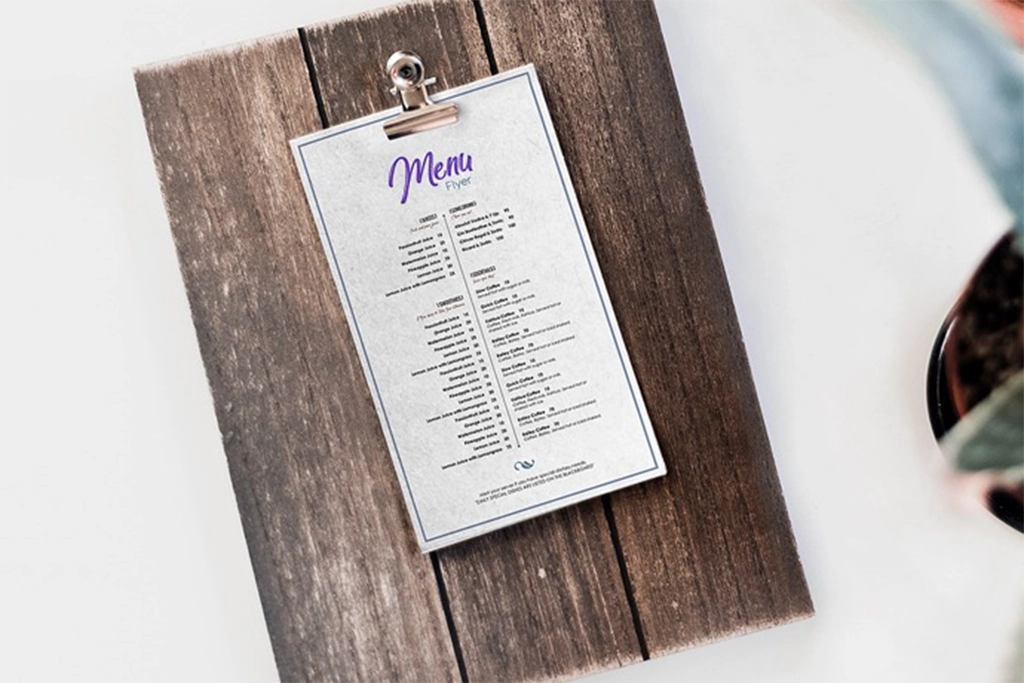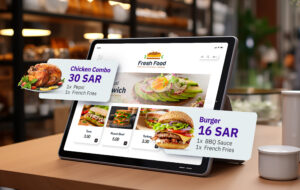A restaurant’s menu is far more than a piece of paper or app screen with listed items followed by prices. A menu can make or break an entire restaurant’s success. Think of it as the “silent salesperson.” A crafted and well-designed menu can do wonders for a restaurant’s profitability and continuity.
There is an art behind crafting the perfect menu known as the art of influencing consumer choices. Through consumer psychology, restaurants guarantee to create a menu that entices customers and makes them hungry for more.
Here is how psychology is what you need to drive profitability:
The Golden Triangle
Customer’s eyes typically move first in the middle, then move to the top right corner and end their journey in the top left corner of the page. Thus, the golden triangle is formed, in which a restaurant’s most profitable dishes should be placed.
Studies have shown that it only takes 109 seconds for customers to scan an entire menu before ordering. Hence restaurants must make sure their star dishes are visually apparent through the golden triangle area.
Strategic Placing of Items
When sectioning your printed or digital menu, make sure to place your most-wanted items either at the top two rows or the bottom two ones as usually, these spots are where customer’s eyes target when first glancing at each section.
Creative Writing Is All It Takes
Customers tend to inquire about the ingredients of their preferred menu items, and here is where creative writing goes a very long way. But, unfortunately, descriptive writing isn’t enough here to make customers drool over the menu and tap add to cart right away.
However, creative writing that provokes imagination, such as “cooked to perfection, tender, and juicy freshly ground meat,” will make customers unable to resist the temptation of having a piece of this heavenly platter.
Keep Choices to a Minimum
Too many options are confusing for customers. A versatile menu is essential, but too much of anything is good for nothing. Versatility can come in numerous categories, such as appetizers, sandwiches, platters, pasta, and pizza.
However, the number of items under each category should not exceed seven items; otherwise, the entire thing will backfire, ending up with customers either ordering their usual or turned off from the whole experience.
Decoy Items Are Always a Go-to
This technique allows restaurants to subconsciously influence customers’ choices towards certain items over others by placing an overly priced item in the menu’s most visually appealing spots so that customers are urged to look for friendlier, aka high-priced, items that look like the perfect deal.
Pricing Format Maneuver
Customers like to believe they are getting the best deal they can have, so how a dish’s price is formatted in the menu can affect their choices. For example, studies found that 9.95 looks and sounds more favorable to customers than 10.
According to pricing analysis specialists, removing the currency sign from the menu pricing pays off, as studies showed that the currency sign reminds customers automatically of money, thus affecting their decision making.
Keep It Short and Simple
Easy-to-read menus are always the best option to opt to. However, suppose a restaurant offers lunch and dinner with several items for both. In that case, it is preferable to separate and craft two menus for each meal instead of one to avoid confusing customers or overwhelming them with plenty of choices.
Appealing Visual Effects
A study proved that pictures, especially those at eye level, motivate customers to ask for more. Since our eyes serve our stomachs, including photos of a restaurant’s unique dishes on the menu is crucial. Therefore, it is preferable to use a professional food photographer whose pictures capture all the customer’s senses.



